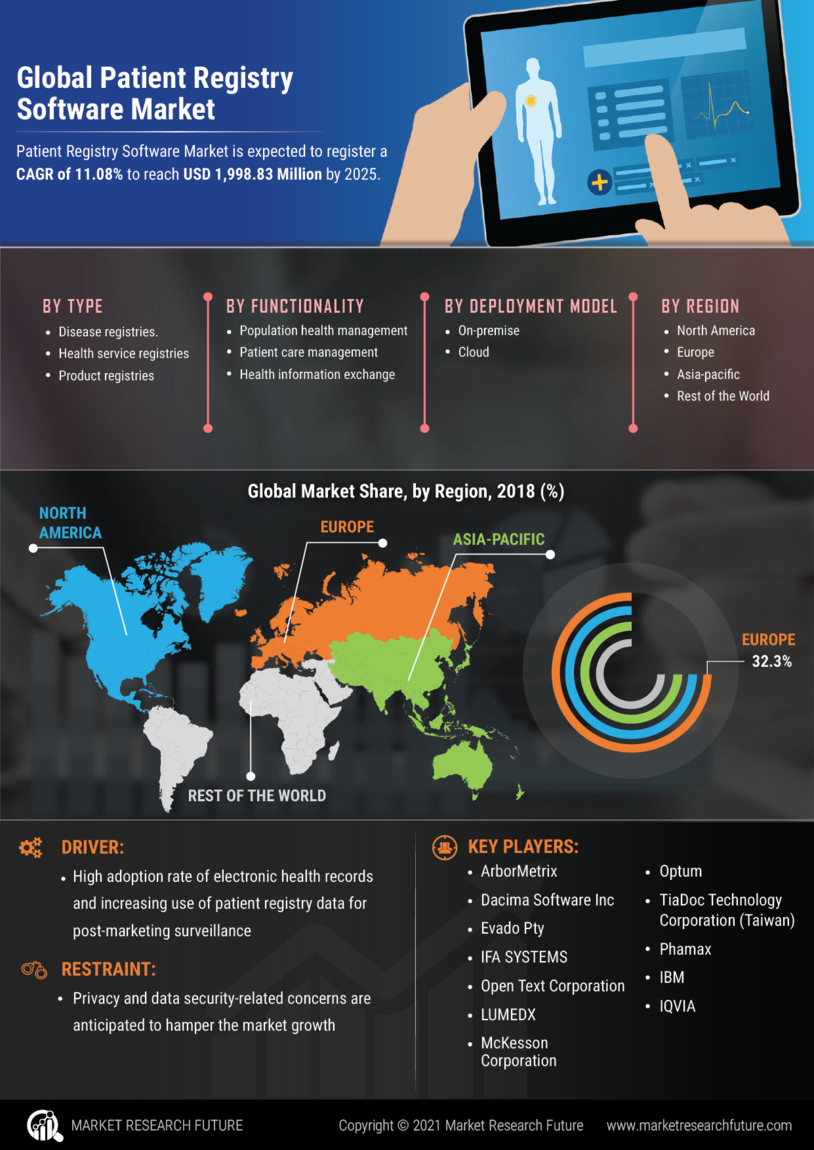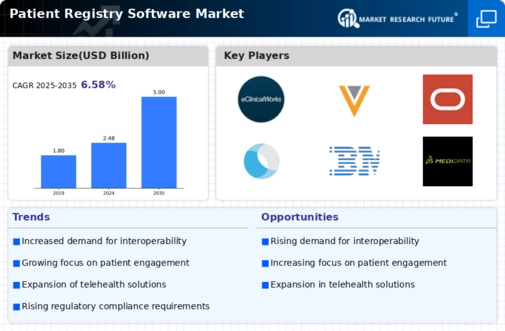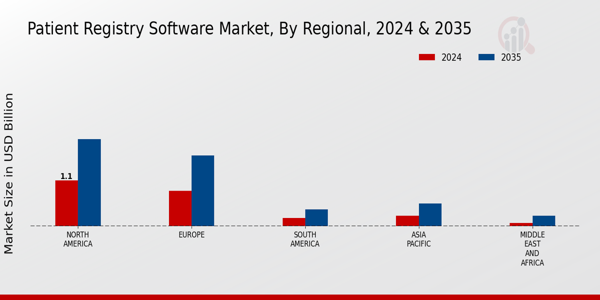Market Growth Projections
Regulatory Support and Incentives
Regulatory bodies across the globe are increasingly supporting the adoption of patient registry software, which significantly influences the Global Patient Registry Software Market Industry. Governments are implementing policies and providing incentives to encourage the establishment of comprehensive patient registries. These initiatives aim to enhance patient safety, improve healthcare quality, and facilitate research. As a result, healthcare organizations are more inclined to invest in registry software solutions. This regulatory backing is expected to contribute to the market's growth trajectory, with projections indicating a rise to 5 USD Billion by 2035, driven by favorable policies and funding opportunities.
Growing Focus on Patient-Centric Care
The Global Patient Registry Software Market Industry is witnessing a paradigm shift towards patient-centric care, which emphasizes the active involvement of patients in their healthcare journey. This trend is driving the demand for patient registries that facilitate better communication between healthcare providers and patients. By utilizing registry software, healthcare organizations can gather patient-reported outcomes and preferences, leading to more personalized treatment plans. This focus on patient engagement is likely to enhance the overall quality of care and satisfaction. As healthcare systems prioritize patient-centric approaches, the market is expected to expand, reflecting the changing dynamics of healthcare delivery.
Rising Prevalence of Chronic Diseases
The Global Patient Registry Software Market Industry is significantly impacted by the rising prevalence of chronic diseases worldwide. As chronic conditions such as diabetes, cardiovascular diseases, and cancer continue to escalate, there is an increasing need for effective management and monitoring solutions. Patient registries play a crucial role in tracking disease progression, treatment outcomes, and patient demographics. This growing demand for chronic disease management solutions is likely to drive the market forward. The anticipated compound annual growth rate of 6.58% from 2025 to 2035 underscores the urgency for healthcare systems to adopt registry software to enhance patient care and outcomes.
Technological Advancements in Healthcare
Technological advancements are reshaping the Global Patient Registry Software Market Industry, as innovations in software development and data management enhance the functionality and usability of patient registries. The integration of artificial intelligence, machine learning, and big data analytics into registry software solutions allows for more sophisticated data analysis and improved patient insights. These advancements enable healthcare providers to make informed decisions based on real-time data, ultimately improving patient outcomes. As technology continues to evolve, the market is poised for growth, with stakeholders increasingly recognizing the importance of adopting cutting-edge registry solutions to stay competitive.
Increasing Demand for Data-Driven Healthcare
The Global Patient Registry Software Market Industry experiences a notable surge in demand driven by the increasing emphasis on data-driven healthcare. Healthcare providers are increasingly recognizing the value of patient registries in enhancing clinical outcomes and improving patient care. The ability to collect, analyze, and utilize patient data effectively is becoming paramount. In 2024, the market is projected to reach 2.48 USD Billion, reflecting a growing trend towards evidence-based practices. This shift towards data-centric approaches is likely to propel the market further, as stakeholders seek to leverage registries for better decision-making and resource allocation.




















